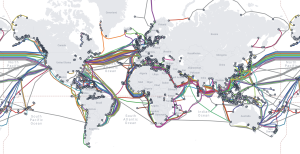MEO Satellites: Revolutionizing Global Communication with Medium Earth Orbit Technology
Medium Earth Orbit (MEO) satellites are a type of satellite that operates in an orbit between 2,000 and 36,000 kilometers above the Earth’s surface. This orbit is higher than Low Earth Orbit (LEO) satellites but lower than Geostationary Orbit (GEO) satellites. MEO satellites are designed to provide global coverage and are often used for navigation, communication, and weather forecasting.
Introduction to MEO Satellites
MEO satellites have been around for several decades, but recent advancements in technology have made them more efficient, reliable, and cost-effective. These satellites offer several advantages over traditional GEO satellites, including lower latency, higher bandwidth, and better signal quality. MEO satellites are also less affected by atmospheric interference and signal degradation, making them ideal for applications that require high-quality and reliable connections.
Applications of MEO Satellites
MEO satellites have a wide range of applications, including navigation, communication, and weather forecasting. One of the most significant applications of MEO satellites is in the field of global navigation satellite systems (GNSS). GNSS rely on a network of satellites in MEO to provide location information and timing signals to receivers on the ground. This technology is used in various industries, including aviation, maritime, and land transportation.
MEO satellites are also used for communication purposes, such as providing broadband internet access to remote and underserved areas. They offer a cost-effective and reliable solution for connecting people and communities around the world. Additionally, MEO satellites are used for weather forecasting, climate monitoring, and disaster response. They provide critical data and imagery to help scientists and emergency responders understand and respond to severe weather events and natural disasters.
Benefits and Advantages of MEO Satellites
MEO satellites offer several benefits and advantages over traditional GEO satellites. One of the most significant advantages is lower latency, which is the time it takes for a signal to travel from the Earth to the satellite and back. MEO satellites have a latency of around 20-30 milliseconds, compared to GEO satellites which have a latency of around 200-300 milliseconds. This makes MEO satellites ideal for applications that require real-time communication, such as video conferencing and online gaming.
Another advantage of MEO satellites is higher bandwidth, which allows for faster data transfer rates. MEO satellites can provide bandwidths of up to 1 Gbps, making them ideal for applications that require high-speed data transfer, such as cloud computing and big data analytics. Additionally, MEO satellites offer better signal quality and are less affected by atmospheric interference, making them more reliable and efficient than traditional GEO satellites.
Challenges and Limitations of MEO Satellites
While MEO satellites offer several advantages and benefits, they also have some challenges and limitations. One of the main challenges is the high cost of launching and operating MEO satellites. Launching a satellite into MEO requires a significant amount of energy and resources, making it a costly endeavor. Additionally, MEO satellites require more complex and sophisticated technology, which can increase their cost and complexity.
Another limitation of MEO satellites is their limited coverage area. While they can provide global coverage, they are not as widely available as GEO satellites, which can provide continuous coverage of a specific region. Additionally, MEO satellites are more susceptible to interference from other satellites and space debris, which can affect their performance and reliability.




